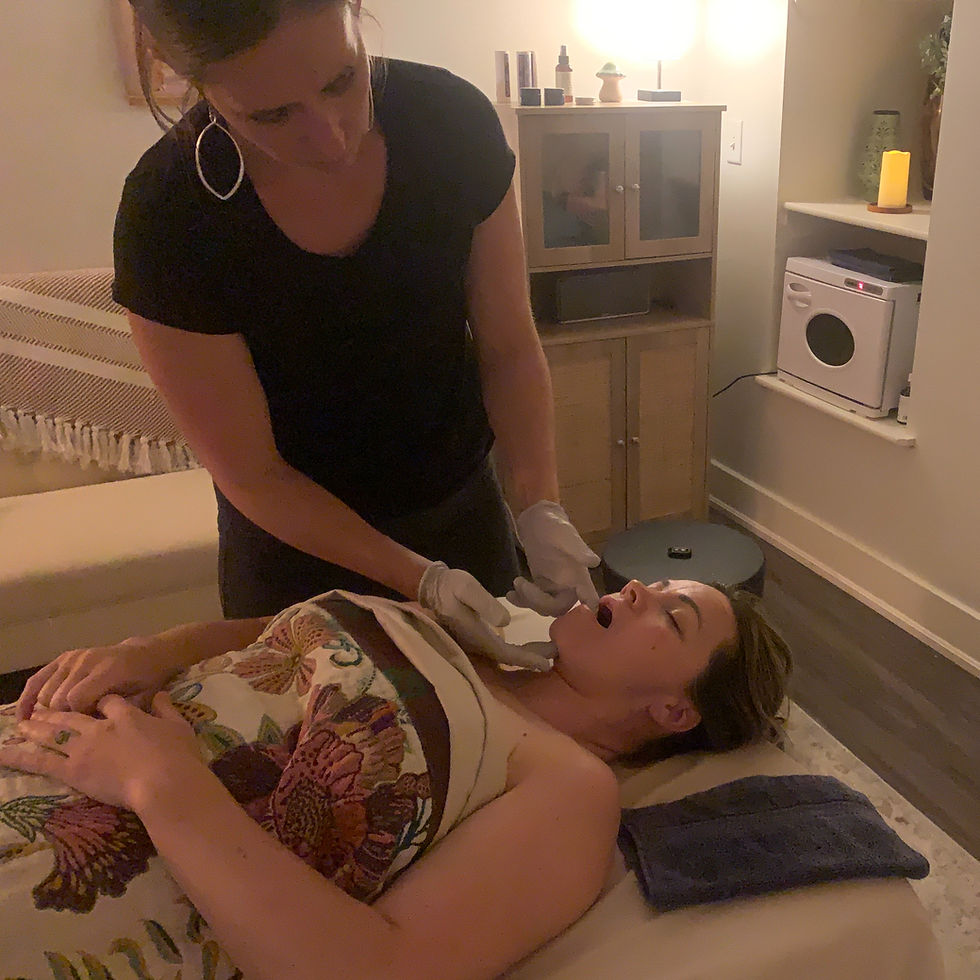What’s a Knot, Really? (And Why They’re So Stubborn and Painful)
- Chelsea Hazzard
- Jul 8
- 3 min read
We’ve all said it before while rubbing our shoulder: “Ugh, I’ve got a knot in my back.” But have you ever wondered what that actually means?
Spoiler: your muscles aren’t literally tied up in a little bow. So let’s talk about what’s really going on when you feel that tight, nagging spot… and why it’s so dang stubborn.
So, what is a “knot”?
When people talk about knots, they’re usually referring to trigger points—those tight, tender spots in the muscle that can be painful and persistent. They’re small areas of the muscle fibers that get stuck in a contracted state and don’t want to let go.
Trigger points are muscle restrictions caused by things like repetitive use, injury, inflammation, stress, or poor posture. They often radiate pain throughout the muscle—or even into other areas (like when a shoulder knot gives you a headache or your glutes spark sciatic pain).
The tricky thing is: the muscle thinks it’s relaxed. This is part of what we call muscle memory (stay tuned for a future blog post on that!). When part of a muscle is stuck in contraction, it can’t pull properly from that area. That creates pain and dysfunction in the muscle and the surrounding soft tissue. And oftentimes it gets worse before it gets better.

Why do they happen?
Trigger points are often caused by prolonged actions or habits—especially those with poor posture. Some common examples:
Slouching at your desk or while driving
Grinding through workouts without proper recovery
Stress and emotional tension
Sleeping in the wrong position
An old injury that never fully healed
Even just sitting still for too long
When certain muscles are overused (or underused), they weaken over time—and other muscles jump in to compensate. That creates a chain reaction of tension that can throw your whole body out of balance.
Why are they so difficult to treat?
Trigger points don’t typically melt away on their own. They’re stubborn. And they don’t just affect how a muscle feels—they affect how it functions. That’s why you might feel pain, stiffness, or even weakness in areas that seem totally unrelated.
One of the most common (and annoying) trigger points that I see is the one between your shoulder blade and your spine. It often causes pain up into the neck, through the head, and even down the arm. It can feel like fire in your upper back.
To actually resolve a trigger point, the muscle fibers need to be reset. As a trigger point therapist, I apply precise pressure to the source of the restriction, then work the surrounding soft tissue to help retrain the muscle and restore normal function. Yes—muscles have memory, and they often need some guidance to remember how to move and relax properly.
It’s not just about pressing on the sore spot—it’s about restoring the muscle fibers to their correct position and tension so the whole muscle can function the way it’s supposed to, as well as working on the opposing muscles that might be pulling you out of alignment.
What can you do about them?
Besides getting regular bodywork, here are a few things you can do to support your muscles between sessions:
Move your body often—especially if you sit for long periods
Stay hydrated—muscles need water to stay pliable
Stretch gently and consistently–I usually recommend stretching the opposing muscle instead of the painful one. For example, if you’ve got a knot in your shoulder blade, I’d suggest stretching your pecs.
Pay attention to posture—especially during repetitive activities and sleep
Prioritize recovery—especially if you’re active
Use tools like foam rollers or lacrosse balls to bring relief between sessions
The bottom line:
Trigger points are more than just annoying—they can seriously affect how your body feels
and functions every day. If you’ve got radiating pain, nagging tension, or tight muscles that just won’t let go no matter how much you stretch, this might be what’s going on.
The good news? You don’t have to live with it.
Trigger point therapy is a powerful, effective way to relieve stubborn muscle tension. In my sessions, I blend it with deep tissue, sports massage, and relaxing Swedish techniques for the best results. This combination helps reduce pain, restore function, and improve how your body moves.
Let’s figure out what your body’s trying to tell you. We’ll look at your posture, your habits, and find real solutions to prevent future issues. You’ll leave your session feeling lighter, looser, and more in control of your movement again.




Comments